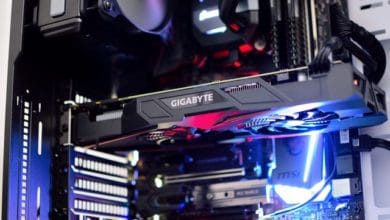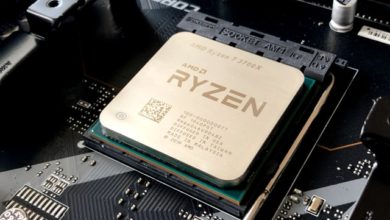The motherboard is an important part of a computer’s structure since it acts as the core link for all machine connections. The motherboard is the computer’s brain. It will have an impact on the computer’s speed and connectivity. As a result, the advantages of a great motherboard in a system are immeasurable.
When you buy a motherboard, you guarantee that the computer’s efficiency is consistent and that the work is reliable. Because the motherboard connects all the other passive components, investing in a decent one ensures that the computer remains stable and does not collapse or hang based on the workload, which is also the situation with the x570 Aorus Elite. You will not be disappointed with this product in any way, from its practicality to its long-lasting power and attractive design; you are in for a treat!
The X570 Aorus Elite, which costs less than $200, is a good way to get started with AMD’s newest platform. PCIe 4.0 compatibility, two PCIe 4.0 M.2 ports, an embedded I/O shield, massive heatsinks protecting the VRM, and front panels USB Type-C compatibility, among many other features, are included.
The Aorus Elite has a less advanced VRM, fewer high-speed USB ports, and does not enable Nvidia SLI multi-GPU configurations than the more costly Aorus models. Nevertheless, AMD Crossfire is enabled. A second M.2 slot and 2.5 Gbit/s Ethernet are available on some pricier boards.
The Gigabyte X570 Aorus Elite was once exclusively available in a variant without an inbuilt Wi-Fi chip, however starting Q4 2019, it has also been offered with Wi-Fi 802.11ac. The motherboard’s other characteristics should be the same in both variants.
The motherboard ensures stability, ensuring that your activities are safe and simple to recover. Consequently, purchasing this version ensures that your system will be stable and trustworthy in terms of memory.
The X570 Aorus Elite is the second motherboard in Gigabyte’s X570 quality products, just over the non-Aorus-logo X570 Gaming X. It supports both Ryzen 2000 and Ryzen 3000 family CPUs. The Elite is designed to provide customers with a reliable basis to build, with up-to-date connections and a powerful power supply region that can operate all Ryzen 3000 processors.
Six SATA ports, 2 M.2 slots, an Intel I211 Gigabit NIC, and the Realtek ALC1200 audio codec with 7.1 surround compatibility are all included, and the four DIMM slots can sustain up to 128GB of RAM and/or DDR4-4000 speeds. Let’s look at some of the more specific features of the x570 Aorus Elite.
Appearance
With a black PCB and some stencilling all around the chipset heatsink and audio region, the Gigabyte X570 Aorus Elite has a very bland appearance. Aorus logo can be seen on the left VRM heatsink and a shroud concealing the connected back IO plate. The panel’s heatsinks are entirely brushed metal, with the chipset heatsink boasting a modest fan and the Aorus falcon perched triumphantly within the top region.
The DIMM and PCIe ports are also black to match the board’s main, metal-clad PCIe slot that Gigabyte refers to as Ultra Durable PCIe armor. The 8-pin EPS, 24-pin ATX, and SATA ports, and the rest of the connectors, are all dark as well.
On the PCB, there are RGB Lights. The VRM heatsink is located beneath the IO shroud and has a border on the bottom-left side that separates the sound bits from the entire board. The RGB surrounding the VRM adds a wonderful personality above, while the former produces a natural glow below. With its simple black appearance and sparing use of inbuilt RGB Led bulbs, the Gigabyte X570 Aorus Elite should blend with most design schemes.
We start looking at the heatsinks and cover surrounding the VRMs and the rear of the IO region on the upper half of the motherboard. The first RGB LED strip is located between the shroud and the left heatsink with the Aorus trademark. A solitary 8-pin EPS connector is located just above.
The Elite’s VRM is described as a 12+2 step process on the site. After digging a little deeper, we can observe that the board employs an Infineon IR35201 regulator in a 6+1 arrangement and phase doublers to operate in the 12+2 Gigabyte states. Any one of the Zen 2 CPUs ought to be capable of handling the VRMs at stock and with little overclocking.
All 4 fan headers are located on the upper part of the motherboard. Three are over the top, whereas the fourth is adjacent to the back IO shroud, somewhere above the M.2 socket. All fan headers are adapters that can handle both PWM and DC fans. Gigabyte’s Smart Fan 5 software controls all the fan headers via six sensing devices on the motherboard, which you may use to base your fan on. For instance, if your PCH gets heated, the case fan header can cycle faster. It even has “Fan Stop” features that, like the title suggests, turn off the fans when the temperature drops below a set level.
The 4 DIMM slots on the right side of the board are unarmored using a double-sided latching mechanism to hold the modules. Two of the four RGB headers can be seen in the top right corner. One header enables simple RGB strips with a 4-pin arrangement (2A max), while another uses a 3-pin header to handle programmable RGBs.
Audio Section
Moving back to the bottom of the board, the audio area is on the bottom left. The 7.1-channel chip is buried beneath the EMI shielding, with Amp-Up Audio on top, with a stencilled pattern. Two lines of audio capacitors follow, with yellow Chemicons on the left and red WIMA FKP2 transistors on the right. A “noise guard,” containing the second region with RGB lighting, separates the audio portion from the entire board. All pairs of LEDs and the headers can be managed using the accompanying RGB Fusion software.
There are 2 full PCIe slots and two x1 size slots in the PCIe region. Gigabyte’s armor from around the slot on the upper PCIe connector avoids shearing with hefty graphics cards. The top slot has full PCIe 4.0 x16 bandwidth supplied from the CPU, while the bottom slot has PCIe 4.0 x4 bandwidth provided from the chipset. PCIe 4.0 is also supported in the two x1 slots.
The two M.2 connectors can also be located near the PCIe slots. The first one had a heatsink above the main PCIe slot, whereas the second is above the other full-length slot and has no heatsink. SATA and PCIe 4.0 x4/x2 SSDs up to 110mm in length are supported by both interfaces. The wonderful thing about using both slots is that there’s no port pooling (due to the extra bandwidth provided by PCIe 4.0).
The chipset heatsink takes up a lot of space on the board and has a modest fan to maintain the 11W chip cool. We barely noticed the fan when it was turned on and when it ramped up to maximum speed before slowing down. Finally, many headers run across the bottom, including the second RGB headers, the Q-Flash button, and front-panel USB headers.
The back I/O would be last but not the least. Interestingly, the X570 Aorus Elite includes a unified rear I/O plate, giving it a more costly feel and neater appearance. With an Aorus falcon on the I/O plate and the same lines pattern stencilled on the board, Gigabyte applied the very same styling cues.
But it’s not all about appearances. Four USB 2.0 (black), four USB 3.0 (blue and white – the latter for bios flashback/Q-Flash), and two USB 3.1 Gen2 connections are provided. One item you won’t even find is any form of USB Type-C port, but that’s to be expected when purchasing an entry-level board. The Intel I211 LAN port, and the audio stack, are also located here. The video on this board comes through a single HDMI 2.0 connection if you’re using an APU.
Final Verdict
Gigabyte’s application environment includes a number of apps aimed to help users get more out of their computer, all of which are conveniently housed under a single App Center shell. Generally, the new BIOS is simple to use. However, there are several sections with repeated data, which may be both handy and confusing. Basically, the software allows you to do what you want with a rather simple steep climb.
By a significant margin, the benefits of purchasing a good motherboard outweigh the disadvantages. The most significant disadvantage is the cost; while it may be unreasonably expensive for some, many other options are affordable and capable of fulfilling the same purpose.
The GIGABYTE X570 Aorus Elite comes with a $199 price tag MSRP; however, the Wi-Fi 6 capable version has a $209 MSRP, which is $10 more for the identical board with an Intel AX200 802.11ax wireless interface. Both versions offer respectable features and functionality at a suitable rate, and consumers searching for a gaming-themed device with a good power supply and two PCIe 4.0 x4 M.2 slots should consider both of these versions.
Other Motherboard options to choose from?
- Hand-sorted memory chips ensure high performance with generous overclocking...
- AMD's fastest 8 core processor for mainstream desktop, with 16 procesing...
- Plug-and-play high performance. Downclock capable for systems that only...








